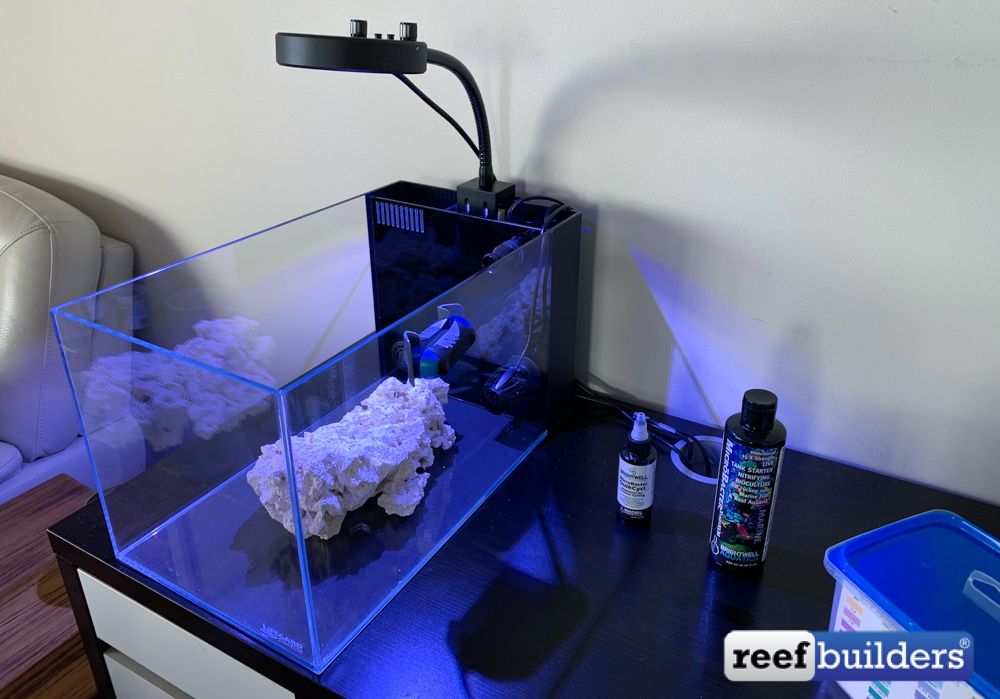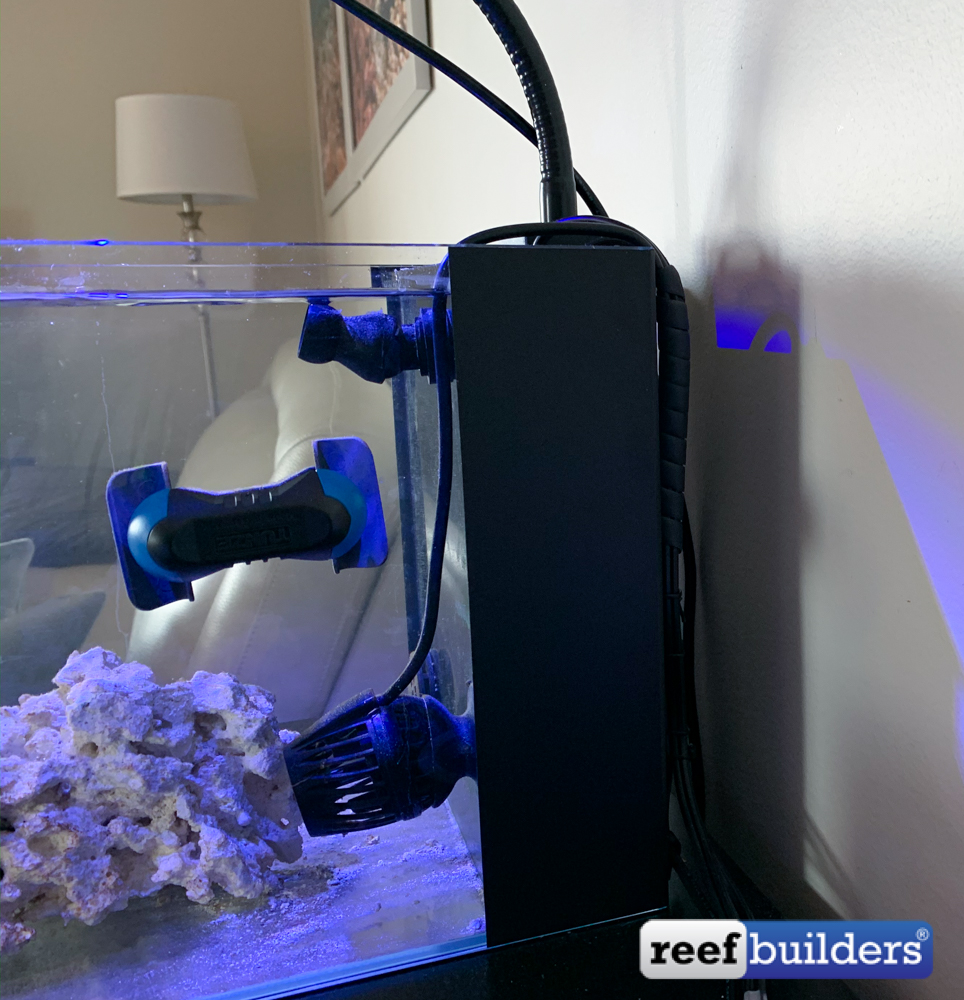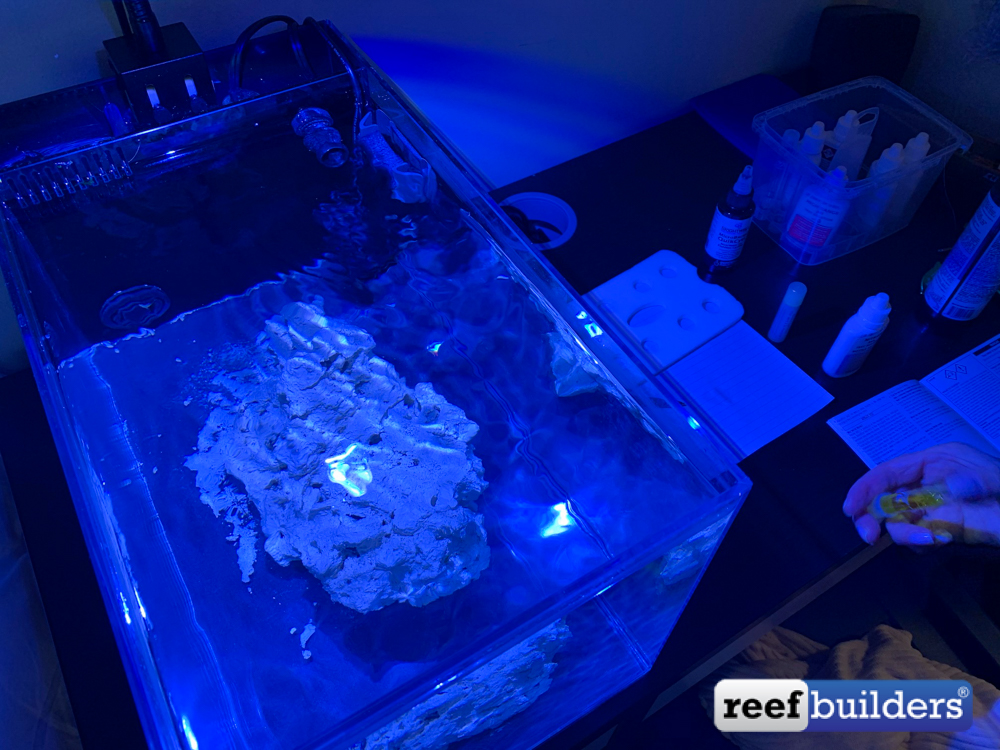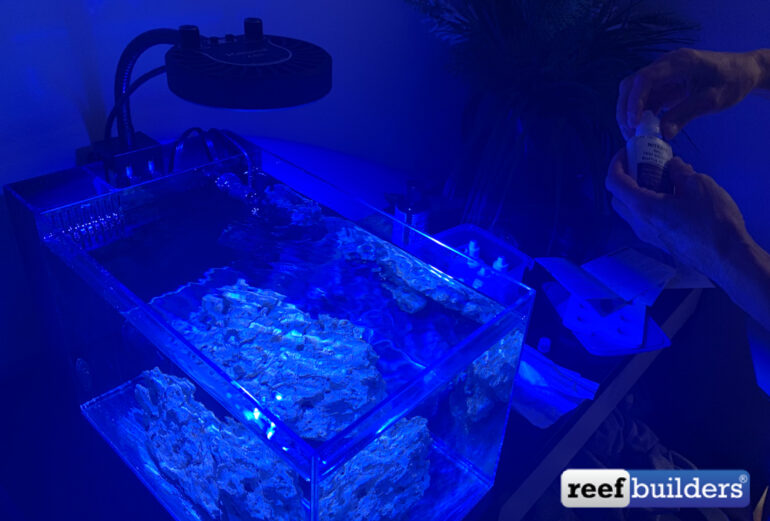Setting up a reef tank for someone who’s not in the hobby.
Ever since we set our eyes on the Lifegard Aquatics Crystal peninsula nano tank, we knew it would be the perfect addition to our family home. But convincing my mom to have a reef tank at home, someone who has never been in the hobby was a barrier we had to overcome.
A few weeks ago, during the ReefStock show, we pulled the trigger and picked up much of what we needed to start a reef tank. The goal of this tank is to have everything streamlined so that anyone who is not in the hobby could have an easy to maintain reef tank.
This is a great learning experience to see first hand from the eyes of a new hobbyist, what are the challenges they face and questions they might ask. Over the next few weeks, we will document the setup of our new aquarium and make a guide for anyone who wants to set up a reef tank for someone who’s not in the hobby.
The Gear
We chose the Lifegard all in one crystal aquarium, medium peninsula size 7.5g. This is a great little tank which also comes in two other sizes, including a return pump, filter strainer, sponge, and carbon bio-mate balls.
For a little extra flow we’ve added the Aquamai KPS – Wifi Controllable pump. Over the tank is a low profile Kessil A80 Tuna Blue. We also have a TUNZE Comline DOC Skimmer 9001 which we’re thinking to add a bit further down the road, and of course, a TUNZE Care Magnet Nano to keep the glass clean.
 The Space
The Space
 Peninsula tanks offer two large viewing sides. We placed this tank at the end of a sofa between the sofa and the front door. It’s important to place a peninsula tank somewhere you can enjoy from different sides, and the scape the tank on each side according to the placement.
Peninsula tanks offer two large viewing sides. We placed this tank at the end of a sofa between the sofa and the front door. It’s important to place a peninsula tank somewhere you can enjoy from different sides, and the scape the tank on each side according to the placement.
We wanted to make sure this space was clean and tidy, minimizing the appearance of cables. We were able to collect the heater, return pump and wave pump cables behind one corner of the tank.
The Cycle
To start the cycle we added Microbacter starter xlm and Microbacter Quickcycle as well as some Brightwell Aquatics Xport BIO Blocks.
Since there are no inhabitants yet in the aquarium this is a good time for new hobbyists to learn how test kits function. Have new hobbyists take and record daily values.
 Water testing can seem intimidating to new hobbyists so help them along with reading the results. Repeat any information needed about the nitrogen cycle so new hobbyists can interpret first hand this process.
Water testing can seem intimidating to new hobbyists so help them along with reading the results. Repeat any information needed about the nitrogen cycle so new hobbyists can interpret first hand this process.
For anyone starting a nano tank, you will notice water evaporation after the first 24-48 hours. Instead of topping up the tank by habit, make sure your new tank owner notices the water line drop and have them top it off.
If you’ve purchased an auto top off for the tank, we would recommend manually top up the tank in the first few days/week. Just to further explain to a new hobbyist why an auto top off is important and just how quickly water can evaporate leaving a higher salinity level in the tank.
Next week we’re learning to test salinity, perform a water change, and provided the cycle is complete add a clean up crew. Stay tuned to see how this 30 day reef tank evolves.



